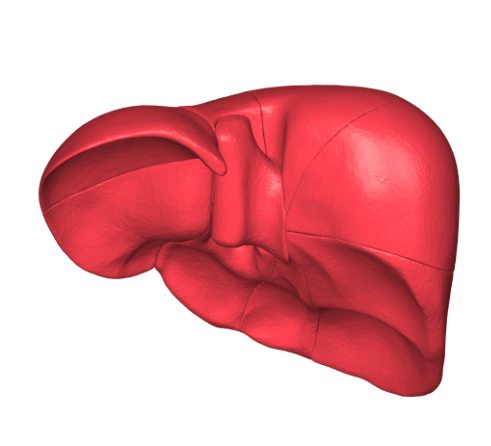This web page was produced as an assignment for an undergraduate course at Davidson College.
Regenerative medicine is essential to counteract the transplant liver shortage and recently researchers have proven liver cells from one section of the biliary tree can heal cells of another section.
On average, in the United States, three people will die a day while waiting for a liver transplant (UNOS 2021). Furthermore, due to a lack of suitable organ donors, around 25% of individuals waiting for any organ in the U.S. will die before ever receiving one (UPMC 2018). This equates to a massive number of deaths that could potentially be avoided through improved regenerative medicine. The inadequacy of organ availability is not a new realization. A variety of approaches have been attempted to avoid liver transplants, such as liver assist devices, but none utilizing organoids (Mayo Clinic). Researchers in “Cholangiocyte organoids can repair bile ducts after transplantation in the human liver,” used a variety of experiments both in mice and human livers to illustrate cholangiocyte plasticity and potential use in regeneration.
To begin, the researchers hoped to analyze the diversity of cholangiocytes within the human biliary tree. This was an essential first step in defining the cells they were working with. They performed this analysis by isolating cells from three distinct locations within the tree: the intrahepatic bile ducts, common bile ducts and the gall bladder. The individual cells were then sequenced using a technology referred to as single cell RNA sequencing. Based on the transcriptomes found, the researchers were able to confirm that distinct regions have the same core transcriptional profile. Despite this, they also found that separate regions have distinct functional markers. This data seemed to indicate that the cholangiocytes had adapted to their specific microenvironments and how they need to interact with bile.
Moving forward with this information, the researchers propagated cells from each defined region as organoids (a three-dimensional tissue culture (Harvard Stem Cell Institute 2017)). These cells, grown together in vitro, were again analyzed using single cell RNA sequencing. This time, the sequencing revealed nearly identical transcriptomes. The analysis showed the conserved core transcriptome and the loss of the unique markers previously shown. To the researchers, this indicated that the differences in cholangiocyte markers were in fact a result of their microenvironment. To test their idea of cholangiocyte plasticity, the researchers added gallbladder bile to the in vitro solution. Astonishingly, the cells showed that they can assume different markers when exposed to different regional factors.
After accumulating this information, researchers were able to address their pressing question: can cholangiocytes be transplanted from one area of the biliary tree to repair another area? To investigate, they utilized immunosuppressed mice models experiencing cholangiopathy. The experimental group was given an organoid transplant from the gallbladder region to the intrahepatic. Meanwhile, the control group was given a treatment with no new cells. The results were clear: the control mice lost the battle with their respective liver disease within a matter of weeks. On the other hand, the experimental mice’s life span was extended to nearly three months. With no tumor growth and a largely regenerated biliary epithelium, the experiment suggests that the transplanted organoid allowed healthy cell regrowth in the damaged intrahepatic region.
Though this finding was important, the researchers recognized that the mouse liver is a far different environment than the human liver. Eventual use of this technique in human required experimental validation in the human liver environment. The researchers prepared liver samples that were ex vivo or out of the body. They were circulated with oxygenated blood, given proper nutrients and kept at an average body temperature in hopes of nearly mirroring a real human body environment. The samples then were given the same treatment as the mice. Gallbladder organoids were transplanted to the injured intrahepatic ducts. Ultimately, the transplanted cholangiocytes lost their gallbladder markers and presented intrahepatic markers. In addition, they largely regenerated the injured ducts as compared to the control livers.
While these results are promising, it is important that this potential therapy is further tested. The use of organoids for repair has potential to save hundreds of thousands of lives but only if appropriately studied. The liver experiment, performed in this article, provided a best comparison to the environment within the human body but there are many factors that should be further accounted for before declaring a success. For example, the experiment analyzes livers with specific disease criteria. How will the organoid transplantation work when other factors such as medication or multimorbidity are at play? Despite the work remaining, this research is a revolutionary stepping stone in solving a massive global issue.
All in all, the researchers in, “Cholangiocyte organoids can repair bile ducts after transplantation in the human liver,” were able to confirm the results of their mouse experiment and prove the plasticity of human liver cells. These results could prove to be major game changers in the realm of regenerative therapy.
Emma Heiderscheit is a sophomore biology major at Davidson College. Contact her at: emheiderscheit@davidson.edu
References
Liver distribution. UNOS. (2021, January 14).“https://unos.org/policy/liver-distribution/”r HYPERLINK “https://unos.org/policy/liver-distribution/”-distribution/.
Muraro, D., Tysoe, O. C., Sawiak, S., Beach, T. E., Godfrey, E. M., Upponi, S. S., … Vallier, L. (2021, February 19). Cholangiocyte organoids can repair bile ducts after transplantation in the human liver. https://science.sciencemag.org/content/371/6531/839.
Center for Regenerative Medicine – Liver Regeneration. Mayo Clinic. (2017, October 20). https://www.mayo.edu/research/centers-programs/center-regenerative-medicine/focus-areas/liver-regeneration.
Organoids: A new window into disease, development and discovery. Harvard Stem Cell Institute (HSCI). (2017, November 7). https://hsci.harvard.edu/organoids.
© Copyright 2020 Department of Biology, Davidson College, Davidson, NC 28036
